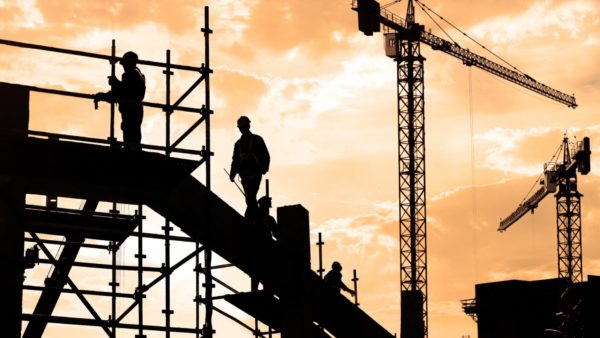Morwenna Fellows’ PhD research uncovered the communication issues that arise on site where there is no shared first language. By Nicky Roger.
Tell us about your research?
As someone with a translation and interpretation background, I’ve been interested in breaking down language barriers in different contexts for years now. Recently I’ve been researching communication on construction sites where not everyone shares a common language.
Multilingual sites often encounter specific challenges regarding safety, integration and productivity. Of particular importance is the fact that workers from a non-English-speaking background are at a higher risk of accidents than their local counterparts. Considering migrant workers comprise up to 50% of the onsite workforce in London, and many of these workers speak little or no English, then the size of the issue is considerable.
What we found through our observations is that on a daily basis migrant workers often find themselves involved in interpreting/translating between their first language and English to help facilitate communication with their peers in an ad-hoc and informal manner.

Although these bilingual workers are key to the everyday functioning of sites, their role is not formally recognised, and not much is understood about the language work they are doing and how it happens.
We’ve found that the scope of the language work varies enormously and spontaneously depending on contexts and may include mediation and written translation.
Often the information has significant health and safety (H&S) implications, and yet there is no way of knowing the accuracy and/or relevance of what is being communicated. Our findings can now be used to establish guidance for training and for managing communication on multilingual sites.
What inspired you to research this?
I was interested in applying my language knowledge to construction site communication. Onsite communication is complex due to terminologies, slang and language variants making communications not easily translatable. Communication is also complicated by factors such as changing workgroups and noise.
Plus, it is a field where professional translators and interpreters are rarely hired. Diving into the industry from a communication background has led to innovative ways of looking at these difficulties. Interventions regarding language as an issue have largely been overlooked.
Why is this important for construction projects?
Communication affects every aspect of a construction project, and how it is managed has either positive or negative implications for outcomes.
Take project delivery, for example. Participants in our interviews – project managers, supervisors etc – repeatedly mentioned how language barriers often result in the need for extensive rework and repeating instructions, double-checking the work carried out – leading to massive non-value-added costs and time.
We also found that communication difficulties often cause concern, frustration and mistrust, which affect projects in ways that are more difficult to pinpoint in terms of time and cost, but hugely important nonetheless. For instance, these negative effects of poor communication impede teamwork and inhibit the creation of positive site and safety cultures, thereby increasing accident and injury rates, especially on sites with diverse workforces.
Our data showed instances of miscommunication caused by language barriers having devastating H&S consequences. Inadequate provisions for training in other languages or translation means that often information given in inductions, toolbox talks or in daily task communication is not accessible for all workers, and, crucially, there are no means for checking whether information actually gets across or is embedded as intended.
CV: Dr Morwenna Fellows
2018-22 University of Reading, PhD, Construction Management
2016-17 Universidad de Alcalá, Master’s, Intercultural Communication, Interpretation and Translation in Public Services
2011-16 University of Glasgow, BA English and Spanish Literature
How do you see your research helping to these issues?
The good news is that there are cost effective and practical ways of addressing these difficulties. The right kind of training and guidance on how to maximise on existing communication skills would go a long way towards building communication bridges.
There are also many effective ways that companies can harness technology or build on existing communication channels – like posters and induction materials – to facilitate communication with speakers of different languages.
What are the next steps?
The next step for us is to work with firms to help them develop and implement training protocols for organising multilingual projects more effectively and training key people to improve intercultural communication.
We are aware that the diversity of workers’ linguistic makeups mean that there are no ‘one size fits all´ recommendations. We aim to work with firms individually.
The real impact comes from training workers who are involved in informally translating/interpreting and identifying scalable initiatives that can be practically implemented to improve overall communication on multilingual sites.
Morwenna Fellows’ doctorate was under supervision by the University of Reading’s Dr Florence Phua FCIOB.If you’re interested in academic membership visit www.ciob.org/membership/become-a-member/educator.









